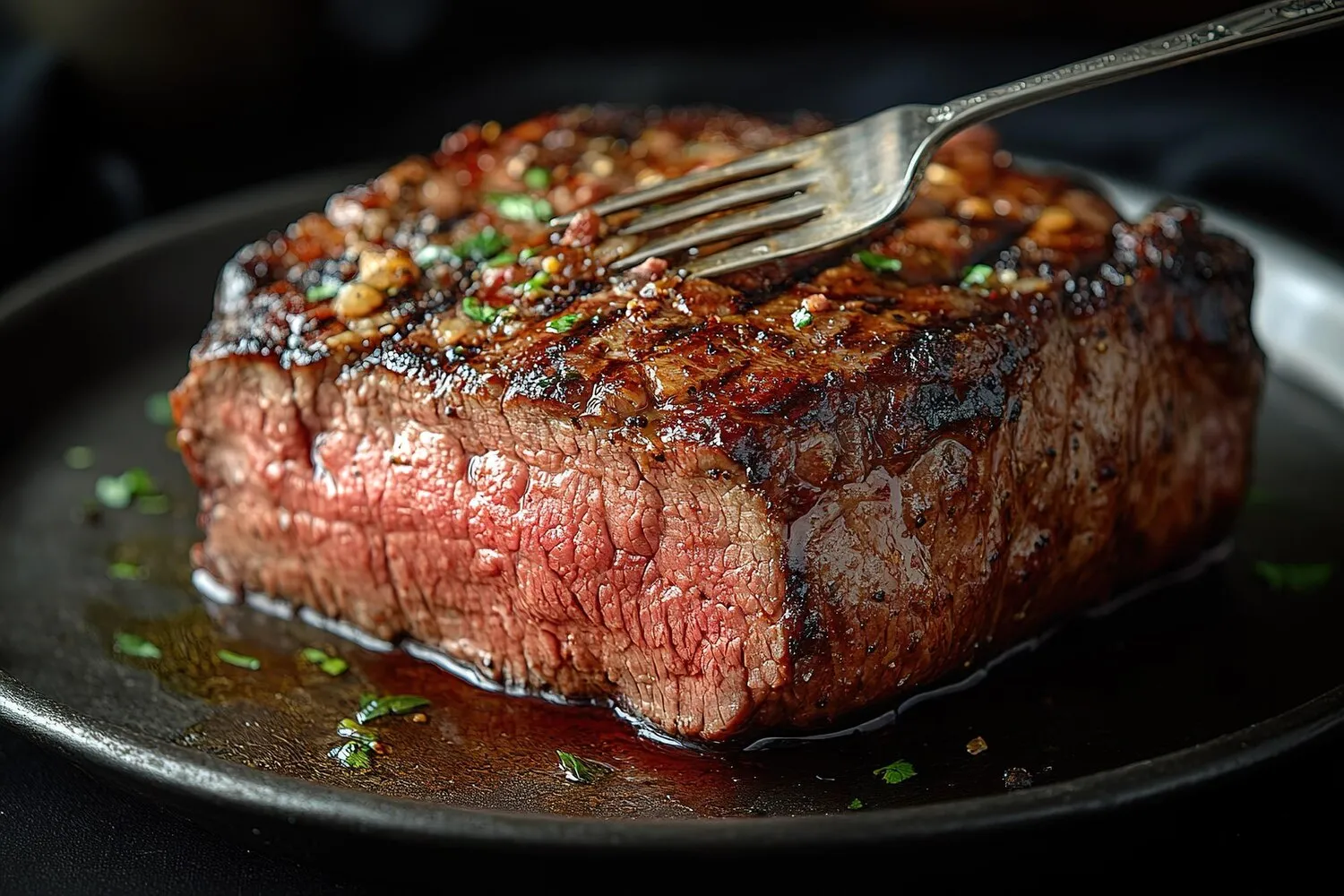
Biefstuk
Biefstuk, often described as delicious and a popular choice.
Nutrition Facts
* The % Daily Value (DV) tells you how much a nutrient in a serving of food contributes to a daily diet. 2,000 calories a day is used for general nutrition advice.
The preparation of steak has ancient roots, linked to early forms of cooking meat over fire. 'Biefstuk' as a specific term in Dutch cuisine likely evolved with increased meat consumption and culinary refinement, reflecting broader European trends in steak preparation. Steak's global popularity is due to its simplicity and adaptability to various cultures and cooking styles.
Steak, including 'biefstuk', represents a celebration of meat and is often associated with special occasions, gatherings, and a sense of indulgence. Its preparation and consumption are often linked to social bonds.
Social Gatherings
Steak dinners are frequently held as a celebratory meal, signifying achievement, friendship, or special occasions. Preparing steak can be a social activity, with friends and family gathering around a grill or table.
Restaurant Culture
Steak is a prominent menu item in restaurants worldwide, signifying quality and a premium dining experience. Steakhouses often become destinations for special occasions and business meetings.
Dutch Biefstuk traditions
In the Netherlands, 'biefstuk' is a common dish often served with fries ('patat') and mayonnaise, or in a sandwich. It's a relatively accessible dish in Dutch cuisine, often enjoyed at home or in casual restaurants.
The primary flavors of both 'biefstuk' and steak depend on the cut of meat and the method of cooking, but generally revolve around rich, savory beefiness, often enhanced by simple seasonings.
The taste is centered around the natural umami and iron-rich flavor of the beef. Seasonings are usually straightforward: salt, pepper, and sometimes garlic. The cooking method (pan-frying, grilling, etc.) contributes significantly to the flavor profile, creating Maillard reaction products that deliver a complex, browned savoriness. The cut of beef also plays a large role, with tenderloin steaks having a milder flavor and ribeyes having a richer, fattier flavor.
Meat Quality
Start with high-quality cuts of beef. Look for marbling (flecks of fat within the muscle) for added flavor and tenderness.
Temperature Control
Bring the steak to room temperature before cooking for even cooking. Use a meat thermometer to ensure the desired level of doneness (rare, medium-rare, medium, etc.).
Seasoning
Season generously with salt and pepper before cooking. Consider adding garlic, herbs, or other spices to enhance the flavor. Don't be afraid to experiment.
Resting Period
Allow the steak to rest for several minutes after cooking. This allows the juices to redistribute, resulting in a more tender and flavorful steak.
Explore additional Grill dishes and restaurants
Explore GrillDiscover top dining spots and culinary experiences in Bergen op Zoom.
Explore Bergen op ZoomLearn more about the food culture, restaurant scene, and culinary heritage of Netherlands.
Explore Netherlands